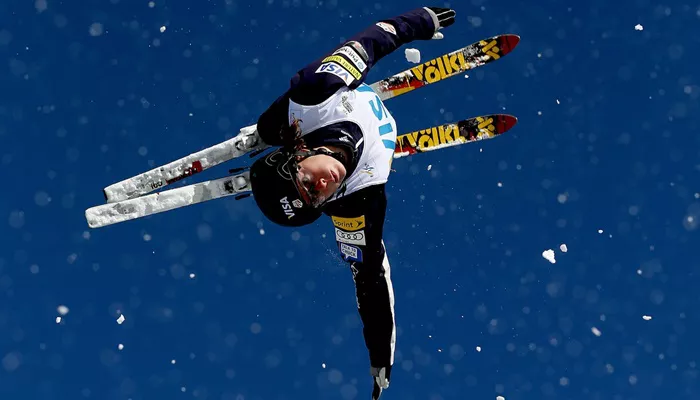Aerial skiing is a breathtaking discipline where skiers perform acrobatic jumps off snow ramps, executing spins, flips, and twists before landing gracefully. It combines technical precision, athletic power, and artistic expression. For those new to this exciting sport, understanding the basics is crucial for safe and progressive learning. This guide offers a comprehensive overview to help beginners start their aerial skiing journey with confidence and enthusiasm.
What Is Aerial Skiing?
Aerial skiing is a freestyle skiing event where athletes ski down a steep inrun, launch off a specially designed ramp, and perform aerial maneuvers. Judged on takeoff, form, height, and landing, it demands technical skills and physical strength. Originally developed from ski jumping and acrobatics, it has evolved into a popular Olympic discipline.
Origins and Evolution
Aerial skiing has roots in the 1930s when acrobatic ski stunts emerged in Europe. It gained formal recognition in the 1950s and became a Winter Olympic event in 1994. Modern aerial skiing incorporates advanced training techniques, including trampoline work and water ramp practice, ensuring higher safety and skill development.
Key Features of Aerial Skiing
The sport focuses on three main aspects: jump execution, air maneuvers, and landing technique. Each element requires practice and detailed understanding to perform safely and effectively.
Essential Equipment for Aerial Skiing
Proper gear ensures safety and enhances performance. Beginners must invest in reliable equipment designed for freestyle skiing activities.
1. Skis and Bindings
Aerial skis are shorter and lighter than alpine skis, providing better control in the air. Bindings must release easily to prevent injury upon hard impacts.
2. Boots
Flexible yet supportive boots help maintain ankle stability while allowing necessary movement during jumps and landings.
3. Helmet and Protective Gear
A certified ski helmet is mandatory. Additional protection like back protectors and padded suits is recommended to reduce injury risk.
Physical and Mental Preparation
Aerial skiing demands both physical fitness and mental sharpness. Preparation off the snow is as important as on-snow training.
1. Strength and Conditioning
Focus on core strength, leg power, balance, and flexibility. Exercises like squats, lunges, and plyometrics improve jump performance and reduce injury risks.
2. Mental Training
Visualization, goal setting, and managing fear are essential mental skills. Confidence in executing jumps comes from structured practice and mental resilience.
Learning the Basics
Starting with the fundamentals builds a solid foundation for future progression in aerial skiing.
1. Mastering the Inrun
The inrun involves gaining controlled speed toward the jump. Proper stance—knees bent, hands forward, eyes ahead—is critical for stability and consistency.
2. Understanding Takeoff Mechanics
At the ramp’s lip, skiers must push upward forcefully. Timing, posture, and explosive strength determine jump height and success in aerial maneuvers.
3. Simple Maneuvers for Beginners
Start with basic tricks such as straight airs, simple grabs, and small 180-degree spins. Progress gradually to flips and more complex spins as confidence grows.
Training Methods for Aerial Skiing
Various off-snow and on-snow methods accelerate skill development safely.
1. Trampoline Training
Practicing flips and spins on trampolines builds air awareness without the risk of hard landings.
2. Water Ramps
Water ramps offer a safe environment to practice real jumps, landing into pools instead of snow. This method helps skiers refine techniques before winter conditions.
3. On-Snow Drills
Progress from small jumps to competition-sized ramps. Use drills focusing on balance, air control, and landing accuracy during early stages.
Safety Tips for Beginners
Prioritizing safety ensures a positive experience and minimizes the risk of injuries in aerial skiing.
1. Start Small
Use small training jumps before advancing to larger ramps. Gradual progression helps build technique and confidence.
2. Work with Qualified Coaches
Professional guidance is essential. Coaches correct techniques early, provide tailored exercises, and supervise progression safely.
3. Use Proper Warm-Up Routines
Dynamic stretching and light cardio prepare the muscles and joints for the demands of aerial skiing sessions.
Common Mistakes and How to Avoid Them
Recognizing and correcting mistakes early helps beginners improve faster and avoid injuries.
1. Incorrect Takeoff Posture
Jumping too early or too late leads to instability in the air. Focus on timing and pushing off with both legs evenly.
2. Loss of Air Awareness
Beginners often panic mid-air. Regular trampoline and water ramp sessions improve spatial orientation and calmness during jumps.
3. Poor Landing Technique
Landing stiff-legged increases injury risk. Practice soft, absorbing landings by bending knees and keeping arms forward for balance.
Recommended Progression Timeline
Setting realistic goals ensures steady improvement in aerial skiing skills.
1. First 1-3 Months
Focus on strength training, basic skiing techniques, and trampoline practice. Begin small jumps with simple air maneuvers.
2. 4-6 Months
Advance to larger ramps, introduce simple flips and spins on water ramps. Emphasize correct takeoff and landing techniques.
3. 6-12 Months
Begin combining spins and flips. Transition to practicing more challenging maneuvers under coach supervision. Compete in beginner events if ready.
Conclusion
Aerial skiing is a thrilling blend of athleticism and artistry. Beginners must focus on mastering basic skills, maintaining safety, and progressing patiently under expert guidance. With dedication, proper training, and respect for the sport’s demands, new aerialists can soar to incredible heights—literally and figuratively—on their skiing journey.

